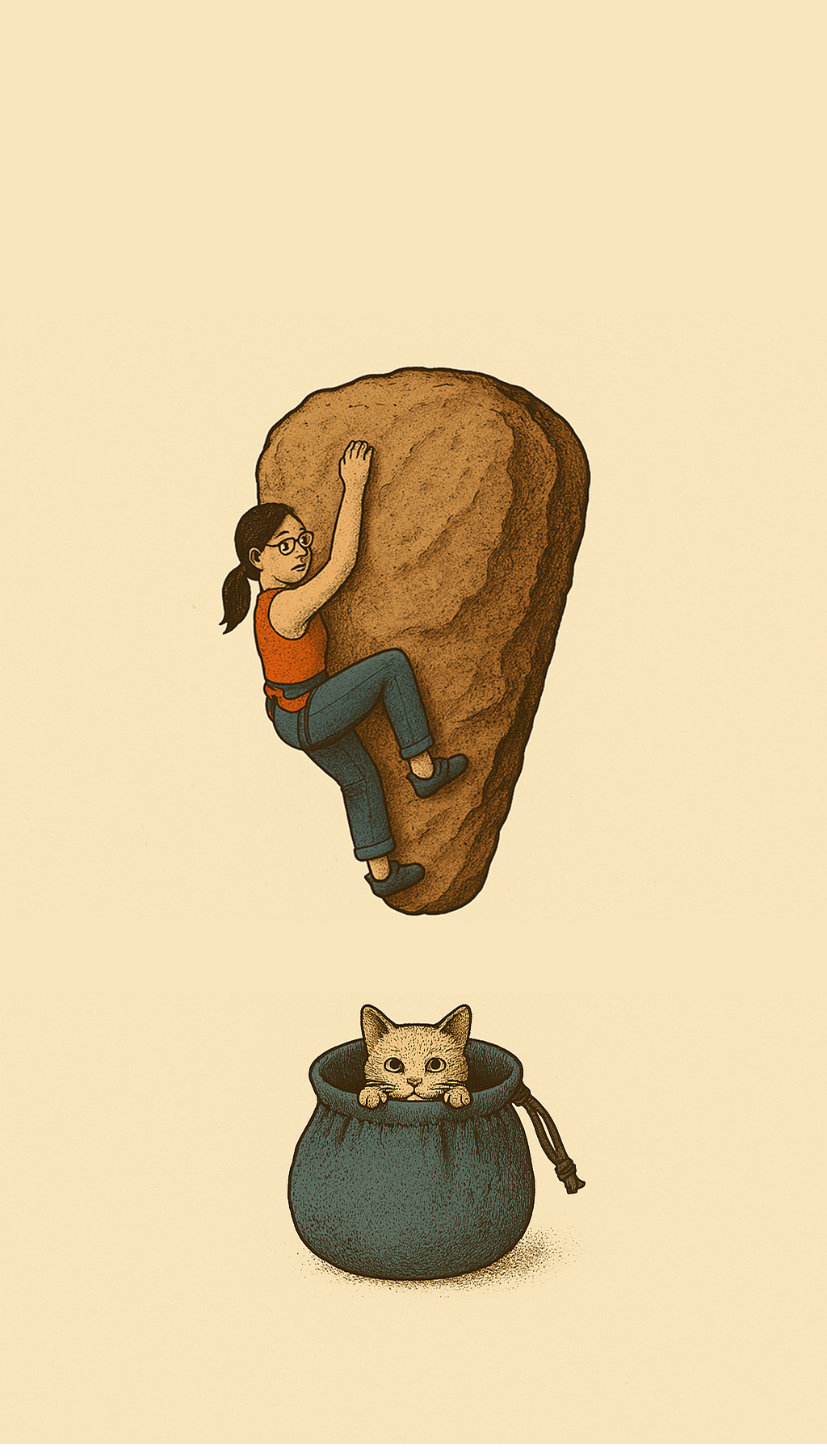“Clean Like You Climb”: Brushing Holds with the Hips
The zero-time, zero-strain drill that upgrades every bouldering session
What if you could layer in targeted footwork, balance, and technique training to every single bouldering session—without extending your time in the gym, adding strain to your session, or taxing your recovery?
What if this practice didn’t just improve your movement, but also helped rewire your default mindset, making technical awareness and full-body engagement second nature—before you even pull on?
That practice exists.
You’re probably already doing it.
You’re just doing it with your arms instead of your whole body.
It’s brushing holds.
Or more precisely: brushing holds using climbing movement.
A Warm-Up, Training Drill, and Mental Primer in One
Climbers brush for friction. But few use brushing as a movement practice.
What happens if you treat brushing like climbing?
What if you use your hips, legs, and center of mass—not just your wrist—to generate each brushing motion?
This micro-drill integrates:
Hip-led movement
Footwork precision
Balance exploration
Proprioceptive awareness
Mental rehearsal
Emotional regulation under social pressure
All while doing something you already do.
No extra minutes. No added fatigue.
Just… a shift in how you move.
How to Brush Like You Climb
1. Start Small
Begin with a short-handled brush for more control. As you get more confident, try longer brushes to increase the balance challenge.
2. Choose Your Arm Position
Easy/stable: Elbow bent to ~90°, pinned at your side.
Challenging: Fully extended arm.
Advanced/creative: Underhand brushing for underclings or awkward angles.
3. Generate the Motion from Your Hips
Forget lazy wrist flicks. Instead, brush using the same kinds of motion you’d use to climb:
Calf raises to reach higher holds.
Side-to-side weight shifts to move across volumes.
Mini-jumps or dynamic knee bends to activate power and coordination.
Subtle torso rotations to access strange angles.
Imagine each brush stroke as a mini climbing move. You’re not just preparing the hold. You’re practicing how you’ll arrive at it.
4. Be Fully Awake
Notice your alignment.
Are your hips over your feet?
Are your toes gripping or slipping?
Do you feel tension in your core?
This is mindfulness in motion—on the most basic, preparatory level.
Bonus Layer: Mindset & Social Discomfort
Let’s address the obvious:
Brushing like this might look… weird.
Everyone else is delicately twiddling their wrists.
You’re twerking your hips, lunging, or micro-jumping to scrub a hold.
You might get some side-eyes. You might feel silly.
Perfect.
That mild discomfort is also part of the training.
It’s a low-stakes way to practice:
Moving with purpose even under imagined judgment.
Regulating embarrassment or fear of “looking dumb.”
Making deliberate, mindful choices in public spaces.
This emotional exposure is gold—for both beginners and seasoned competitors.
Why This Drill Works
Neurological priming: Brings movement awareness into your session from the very first act.
Motor learning: Reinforces full-body, hip-driven mechanics.
Intentionality: Conditions your brain to approach holds with heightened attention, not haste.
Recovery-safe: No meaningful strain, just engagement.
Time-neutral: Adds zero minutes to your session. Works in warm-ups, between burns, and during cleaning resets.
Your Invitation: Play With It
The next time you brush a hold—don’t just flick your wrist.
Climb with your brush.
Move with it.
Explore how subtle shifts in your hips and feet affect contact, angle, and stability.
Feel how brushing can teach you to move better before you even pull on.
You’ll clean more than just chalk.
You’ll clean out old habits—and make space for new skill.
Try it. See what happens.
